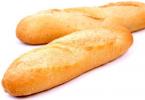Cars from Japanese manufacturers have long been known for their reliability and unpretentiousness. Toyota Corolla can be confidently called one of the most popular cars. The history of the model lasts more than half a century, today eleven generations of Toyota Corolla are known. The impeccable technological qualities of the car, as well as the excellent price-quality ratio, bribe tens of thousands of motorists every year.
Today, statistics show that over the entire period of production, about 50 million copies of the car were sold. The question arises: is this car really good, and what is the real resource of the Toyota Corolla engine?
Line of power units
Japanese engines loudly declared themselves back in the 90s of the last century. Toyota engineers managed at that time to create a truly outstanding design, which was distinguished by its small size and high power. Among other things, Toyota Corolla power units are known for their low fuel consumption and high-torque power. The base is considered a 1.4-liter 4ZZ-FE engine with a chain drive. It has a lot in common with the 1.6-liter 3ZZ-FE engine. The manufacturer decided to install a smaller crankshaft and change the piston stroke, thus, a structurally similar, but less powerful engine with a volume of 1.4 liters was obtained.

The 1.6 1ZR FE power unit is considered the most popular and in demand. Structurally, it consists of four cylinders and sixteen valves. This setting predetermines the presence of a chain transmission, which has a positive effect on the engine resource. It was mainly installed under the hood of the Toyota Corolla E150, E160. Technologically, it turned out to be a perfect power unit, which was designed taking into account previous experience, but using more modern technologies. The gas distribution system of the engine is equipped with a VVTI system, which contributes to the highest quality engine power.
How many engines run on Toyota Corolla
The first 250 thousand kilometers, as a rule, both engines pass without any significant problems. The main thing is to change the engine oil on time. The manufacturer recommends changing the lubricant every 10 thousand kilometers. But, as practice shows, in order to maintain the performance of the car and extend the life of the engine, it is best to carry out a scheduled replacement every 7.5-8 thousand km.
Common malfunctions of 1ZZ, 3ZZ, 4ZZ-FE motors:
- Increased oil consumption. It is observed mainly among power plants manufactured before 2002. The problem lies in the oil scraper rings, which are best replaced with a 2005 model or newer ones. Oil is added to the level, after which the problem disappears;
- Increased noise, engine knock 1ZZ. Occurs at the turn of the first 150 thousand km, and is solved by replacing the timing chain. Valves on Toyota Corolla engines knock in rare cases, and do not need frequent adjustment;
- RPM instability is solved by flushing the throttle and idle valve;
- On some engines, vibration often occurs, it is not always possible to eliminate it. You need to check the rear engine mount.
If we compare power plants of different generations in terms of resource, then, of course, the engines of the 3ZZ, 4ZZ series significantly outperform the older 1ZZ modification. They lend themselves to boring and sleeve, which is a definite plus. But 1ZZ motors are often denied service, they are practically not amenable to major repairs, or carrying out such work turns out to be an unprofitable exercise. It is for this reason that many domestic motorists do not like 1ZZ power plants.
Owner reviews
In Russia, you can often find Toyota Corolla with the VVT 1 system. This modification was assembled taking into account the climatic and other features of the region. It also has four cylinders and is equipped with an injection power system. An indisputable advantage is perfectly adjusted valve timing. Thanks to this, the engine turned out to be quite economical, without losing its factory dynamic characteristics. Japanese engineers claim that their engines run at least 250,000 kilometers without problems, is this really true? Owner reviews.
Engine 1.4

- Maxim, Moscow. For a long time I drove a Toyota Corolla e150 2008 1.4 liter engine paired with a manual transmission. I can say with confidence that in most cases of mechanical action, the engines of this series require 200-250 thousand kilometers during the passage. A lot depends on the conditions in which the car was used. First of all, oil scraper rings and caps wear out, and the timing chain also needs to be replaced after 120-150 thousand km, as you're lucky. This is not a major overhaul, but, in fact, a bulkhead of the engine. Since the sealing of the cylinders remains at this turn at a good level.
- Igor, Krasnodar. Been driving a Toyota Corolla since 2011. The mileage is already 220 thousand kilometers, the engine is still peppy, the car goes well along the highway, I change the oil after 5-6 thousand km, I pour only synthetics recommended by the manufacturer. I adhere to a calm driving style, I don’t drive around the city, with such an attitude towards the car, I think that it will pass at least 350-400 thousand km, and then we’ll see what to do.
- Vyacheslav, Tambov. I have a restyled version of the Toyota Corolla e150 with a 1.4 liter 4ZZ-FE engine. During the operation I realized one thing that timely oil change plays an important role. Subject to timely maintenance, the engine will run for a long time. I always fill synthetics and practically do not deviate from the manufacturer's recommendations. The mileage is 280,000 km, which is certainly a good indicator. During this time, I changed the timing chain twice, fuel consumption is adequate, in rare cases it exceeds the official norm. In general, I am satisfied with the car, the dynamics are also at a good level after such an amount of time.
- Vasily, Rostov. The only drawback of the Toyota engine is the lack of the possibility of a major overhaul. I traveled 300,000 kilometers on my Toyota Corolla e160 with a 1.4 engine, after which I decided to sell it. The engine was, consider, in perfect condition, but decided to change the car because I wanted a new one. I heard that there are still craftsmen and worn-out engines are handicrafted, so there should be no problems here. It is necessary to monitor the condition of the power unit and respond in time to any malfunctions. Then 300-350 thousand Toyota Corolla will definitely pass.
Millionaire engines. Is this reality, or echoes of the constant struggle between European, Japanese and American cars? Many automotive experts do not get tired of arguing about this. There, moreover, new, more advanced models of units are constantly appearing on the market, and in practice they simply have not had time to show their real resource yet.
Nevertheless, there is a strong belief among the people that one of the most reliable engines in the world is installed on Toyota cars. In particular, we are talking about the Toyota Avensis model, which has become one of the most popular in the world today.
It is easy to guess that the reason is not only in the current design, spacious interior and excellent driving characteristics. The engines of all three generations of Toyota Avensis are considered unique in their kind, which is why many connoisseurs of good units will prefer to purchase a used Toyota Avensis instead of a new car from another manufacturer.

Advantages of Toyota Avensis engines
There are a couple of reasons why the best Toyota engines have gained worldwide popularity:
- Well-organized engine compartment compared to other equally popular car brands. As a result, engine repair does not require disassembling a large number of components and removing many attachments just to make diagnostics or perform scheduled maintenance. It becomes cheaper as a result.
- Toyota Avensis engines are worthy of respect due to the fact that their development has always been well funded, because the engines have really excellent performance even compared to units of more expensive cars.
- All indicators of reliability and durability are observed. These are: slow wear of friction parts, failure-free operation of all units of the unit, excellent maintainability.

Overview of the best Toyota Avensis engines
At one time, the Toyota Avensis model replaced the Carina E and Corona, which were popular at that time. The car under the new name was more relevant and modern. This oversized sedan first saw the light of day in 1997. It had a completely European appearance and was distinguished by excellent quality characteristics. The model became scandalous because in some European countries they refused to sell it. It was just a matter of competitiveness compared to more native brands. But in general, the car differed in the following characteristics:
- excellent build quality;
- modern, fresh design;
- high level of comfort and safety;
- excellent quality unit.
First generation
Buyers of the first generation Toyota Avensis had a choice of three petrol units with a volume of 1.6, 1.8 and 2.0 liters. A 2.0-liter turbodiesel option was also introduced. Accordingly, a 1.6-liter engine produces 1-9 horses, a 1.8-liter engine also produces 109 hp. s, and the 2.0-liter unit - 126 horsepower. We can agree that at that time the indicators were more than impressive. In turn, the turbodiesel produces 89 hp. With.
In 2001, the exclusive Avensis Verso model was introduced to the market. This overall car was recognized as the best among the Toyota Avensis models in Australia. Today, its platform is considered more advanced than the second generation.
Important! All units of the first generation Toyota Avensis had excellent build quality, they used the latest technologies, such as a variable valve timing system.

Second generation
The restyled version of Toyota Avensis, produced from 2003 to 2008, had the following engine options:
- 1.6 l at 109 HP;
- 1.8 L delivering 127 HP;
- two-liter turbodiesel with 125 horses;
- later a 2.4 L four-cylinder unit with 124 horsepower was added.
Important! The developers of the car were able to create the best suspension in its class and a unique security system. Japanese crash tests gave the model all possible prestigious stars.

third generation
At the Paris Motor Show in 2008, the third generation of Toyota Avensis was presented. The release of the car continues to this day. Its engines are presented in six variants. Three petrol and the same diesel:
- a two-liter diesel engine produces 126 hp. With.;
- 2.2-liter diesel unit, issuing 150 horses;
- 2.2-liter diesel with 177 horses;
- 1.6 liter petrol engine producing 132 hp With.;
- 1.8 liter unit, produces 147 hp at the output. With.;
- 2.0 liter gasoline engine with a capacity of 152 liters. With.

In conclusion, we can say that the first and second versions of Toyota Avensis are widely used by motorists today. The two-liter unit from the first generation 3S-FE is one of the three most reliable units in the world, it also deserves the title of a millionaire engine.
Toyota Motor Corporation is the largest Japanese and global automaker, one of the largest corporations in the world. Toyota owns manufacturers such as Lexus and Scion, as well as more than 50% of the shares of manufacturer Daihatsu. Lexus was created by analogy with Infiniti and Acura as a premium brand, and Scion as a youth brand. Given this, it is not surprising that Toyota, Lexus and Scion cars are as unified as possible in terms of design, technical component, and sometimes have very minimal differences.
In Russia and the CIS countries, Toyota is traditionally popular, has a reputation as a manufacturer of reliable, resourceful cars, and some engine brands are considered millionaires.
Toyota engines are a huge range of all kinds of power plants, mostly gasoline. The most popular, of course, are four-cylinder engines with various markings. Such engines can be both atmospheric and turbocharged, compressor, etc. Well-known representatives of in-line fours are:, and so on. Larger Toyota engines such as inline 6-cylinder or V6 were also produced and are still being produced. The most famous of them are:, and all their types. For larger cars, Toyota engines are configured as V8: 1UZ-FE and others. Models with a V10 and V12 configuration are quite rare.
Along with Toyota gasoline engines, a range of diesel engines is also produced, mainly consisting of in-line four-cylinder and in-line sixes. In addition to traditional powertrains, Toyota also produces hybrid engines. The most famous car with this setup is the Toyota Prius.
Below you can find all the main types and brands of Toyota engines, new and old, turbo, atmospheric and compressor, find out their volume and power, technical characteristics and more. Now it is absolutely not required to read any reviews, WikiMotors has a description of the main Toyota engines, malfunctions (vibration, troit, etc.) and repairs, resource, weight, where the assembly is made and more.
The key to a long Toyota engine life is oil, choosing the right one will significantly extend the life of your power unit. What engine oil is recommended for Toyota engine, how often an oil change is required, how much to pour, here you will find answers to such important questions.
A significant part of what is written is devoted to tuning the Toyota engine, especially for such legendary engines as 1JZ and 2JZ. Chip tuning, turbo, compressor and other approaches to increase power, suitable for certain types of power units, are mentioned.
It will be interesting to get acquainted with the available information for those who need to replace a Toyota engine with a contract one and need to buy the right engine. After reading what is written, you can easily determine which engine is the best, most reliable and you will not go wrong with the choice.
In this article, we will determine the best engine Toyota car, we will also analyze the characteristics of the motors. Going back to the origins, the most successful series of engines were "Toyota" 1G, the creation of which took place at the end of the 20th century. To say that 1G and its varieties were ideal is not, but all because they were installed on larger Toyota models, instead of pleasing the owners of less impressive cars, such as " Toyota Corolla”, etc. Thus, the category of “Best Engine” can be divided into classes, and already there the winners are determined: “C” - 4A-FE STD type “90”, “D and D +” - 3S-FE type “90, “ E "- 1G-FE type" 90. Please note: the choice was not made by us personally, but on the basis of reviews Toyota owners.
Characteristics of engines on Toyota cars
Engine resource. More specifically, we can talk about the resource of a mass series of engines before a bulkhead, in other words, until the moment when the first serious intervention in the mechanical part of a car engine is required. According to statistics and reviews, engines For " Toyota"require a bulkhead after several hundred thousand kilometers (usually 200-250 thousand km.). However, it is worth noting that a bulkhead is not a major overhaul, but only includes the replacement of piston rings, valve stem seals, etc.
Chain or belt. The chain drive is more of a priority due to a well-thought-out advertising campaign. Car owners are promised high durability and no need for frequent replacements. All this makes the chain drive more in demand, despite the existing shortcomings: mechanical deformations (form over time), noisier operation, the laborious process of replacing the chain drive, etc. As a result, more time and money are needed to maintain or replace the chain drive (in compared to belt).
Modern means reliable? Here everything is not so clear. The stereotype that both Toyota and other Japanese companies don't make things worse on purpose is true. However, environmentalists have an extremely negative impact, thanks to which the owners of vehicles receive a less reliable and durable car, but at a higher price and with increased requirements for operation. Over time, environmentalists have an increasing influence, which is why the models of the 80-90s of the last century were named the best engines.

In what exactly are older engines superior to new ones? The answer is simple, the reduction of mechanical losses in combination with the reduction of fuel consumption (which is called "good intentions") has significantly reduced the level of reliability, and all for the sake of achieving minimum performance in terms of improving the environment.
Toyota engines: what are the reviews about them
Many now, probably, are thinking: “It turns out that modern means bad?”, But you and I will better answer the question of which engine for Toyota cars is better. As in the previous paragraph, everything here is also not so simple. Of course, with classic engines in terms of quality, reliability and service life, not a single ZZ or AZ can be compared. All this is due to non-repairable mechanical part, and for many car services, whose qualifications are not high enough, the complexity of the design will not allow for repair work.
One way or another, there is no replacement for them, if you do not take into account the synchronously updated line of motors on new models. That is why discussions on the topic of comparing a separate motor of the third wave with a specific motor of the second wave are meaningless. Modern engines" Toyota should be accepted, and for further work, ideally, they should be studied.
As for the design features and factory reliability, these engines have very similar performance. The only thing to avoid is engines a new generation of the earliest releases, when there were installation series, and a "test on the buyers" was carried out.
Toyota is considered to be the most popular car brand in Russia. These are cars of the Japanese concern, which have proven themselves to be reliable, economical, pleasant to drive and easy to repair. Of course, Toyota engines played a major role in this. The article provides an overview of Toyota engine models, the main features of engines, their areas of application, advantages and disadvantages.
Gasoline engines
| Series | Type | Description | Peculiarities |
|---|---|---|---|
| A | 2A, 3A, 5A-FE | Carburetor four-cylinder gasoline engines. Installed on Corolla cars. Some of its variants are produced in factories in China for domestic use and are not exported. | Installation on a longitudinal and cross axis of the car is possible. |
| 7A-FE | Low-speed engines of a younger generation with an increased volume. | They are used on Corolla, but can be installed on Corona, Carina, Caldina cars using LeanBurn - a fuel combustion system. | |
| 4A-FE | Type of engines using electronic injection. It has become widespread due to a successful design solution and the practical absence of defects. | ||
| 4A-GE | Forced version using 5 valves in one cylinder and VVT system - variable valve timing. | ||
| E | 4E-FE, 5E-FE | Basic versions of this series. | Applies to Corolla, Tercel, Caldina, Starlet |
| 4E-FTE | Turbocharged engine. | ||
| G | 1G-FE | The most reliable engine developed in 1990. | Applied to Mark II and Crown |
| 1G-FE VVT-i | New technologies have been applied: intake manifold geometry variation and electrically controlled throttle. | ||
| S | 3S-FE, 4S-FE | Basic versions of the engine, widely used and reliable. | Installed on Corona, Vista, Camry |
| 3S-GE | Boosted engine type. Used for sports cars. | ||
| 3S-GTE | Turbine engine. It is expensive to maintain. Expensive Toyota engine repair and maintenance. | ||
| 3S-FSE | Gasoline engine with direct injection. The motor is difficult to maintain and repair. | ||
| 5S-FE | It is installed on large cars with front-wheel drive. | ||
| FZ | The classic version for Land Cruiser in 80 and 100 bodies. | ||
| JZ | 1JZ-GE, 2JZ-GE | Basic modification. | Used for Crown and Mark II |
| 1JZ-GTE, 2JZ-GTE | turbocharged engines | ||
| 1JZ-FSE, 2JZ-FSE | Direct injection engines | ||
| MZ | 1MZ-FE, 2MZ-FE | Motors with aluminum construction, produced by Toyota factories in the USA for export. | Camry-Gracia, Harrier, Estima, Kluger, Camry-Windom. |
| 3MZ-FE | Forced modification, produced for export to America | ||
| RZ | Motors used in jeeps and minibuses. Have individual ignition coils for each cylinder | ||
| TZ | 2TZ-FE, 2TZ-FZE | Basic and uprated motor options for the Estima model | The cardan shaft has complicated any repair work on the engine |
| USD | Engines designed for large jeeps such as Tundra and rear-wheel drive models (Crown) | ||
| VZ | A series of engines with high consumption of gasoline and oil. No longer produced | ||
| AZ | An analogue of the S series. They were used on cars of class C, B and E, SUVs and minivans. | ||
| NZ | Trouble-free forced engines of the third generation. | ||
| SZ | Series developed by Daihatsu for Vits | ||
| ZZ | The series is a replacement for class A. They are installed on Rav 4 and Corolla, and were famous for their efficiency. Produced for export to Europe. | The disadvantage of the series is that due to the lack of Japanese analogues, it is impossible to buy a contract Toyota engine. | |
| AR | US mid-size engine series | Motors supply Highlander, Camry, Rav 4 | |
| GR | Widespread type, which is a replacement for the MZ series. Applicable to many families of Toyota vehicles | The presence of a block of light alloys. | |
| KR | Update of the SZ series with three cylinders and the use of an alloy block | ||
| NR | Small Engines for Yaris and Corolla | ||
| TR | Modifications of serial motors type MZ | ||
| UR | Modern engines for jeeps and cars with rear wheel drive. Modification of the UZ series. | ||
| ZR | They are a replacement for AZ and ZZ. Equipped with DVVT system, hydraulic lifters and Valvematic. |
Diesel engines
| Series | Description |
|---|---|
| N | Engines of small resource and volume are no longer produced. |
| 2(3) C-E | Motors equipped with an electronic injection pump control system. Difficult to repair. |
| 2(3) S-T | Short-lived turbocharged diesels suffering from constant overheating. |
| 2(3) L | The most reliable engines from the atmospheric range. |
| 2L-T | Worst turbodiesel ever. Overheats even during long driving under normal conditions. |
| 1HZ | Reliable naturally aspirated diesel for Land Cruiser jeeps |
| 1ND TV | Diesel of small volume, highly accelerated and equipped with a unique Common Rail system. |
| 1KZ-TE | Turbocharged follower of the 2L-T series with corrected deficiencies and increased volume. |
| 1KD-FTV | Modification of the previous version. The Toyota engine device includes a Common Rail system. |



